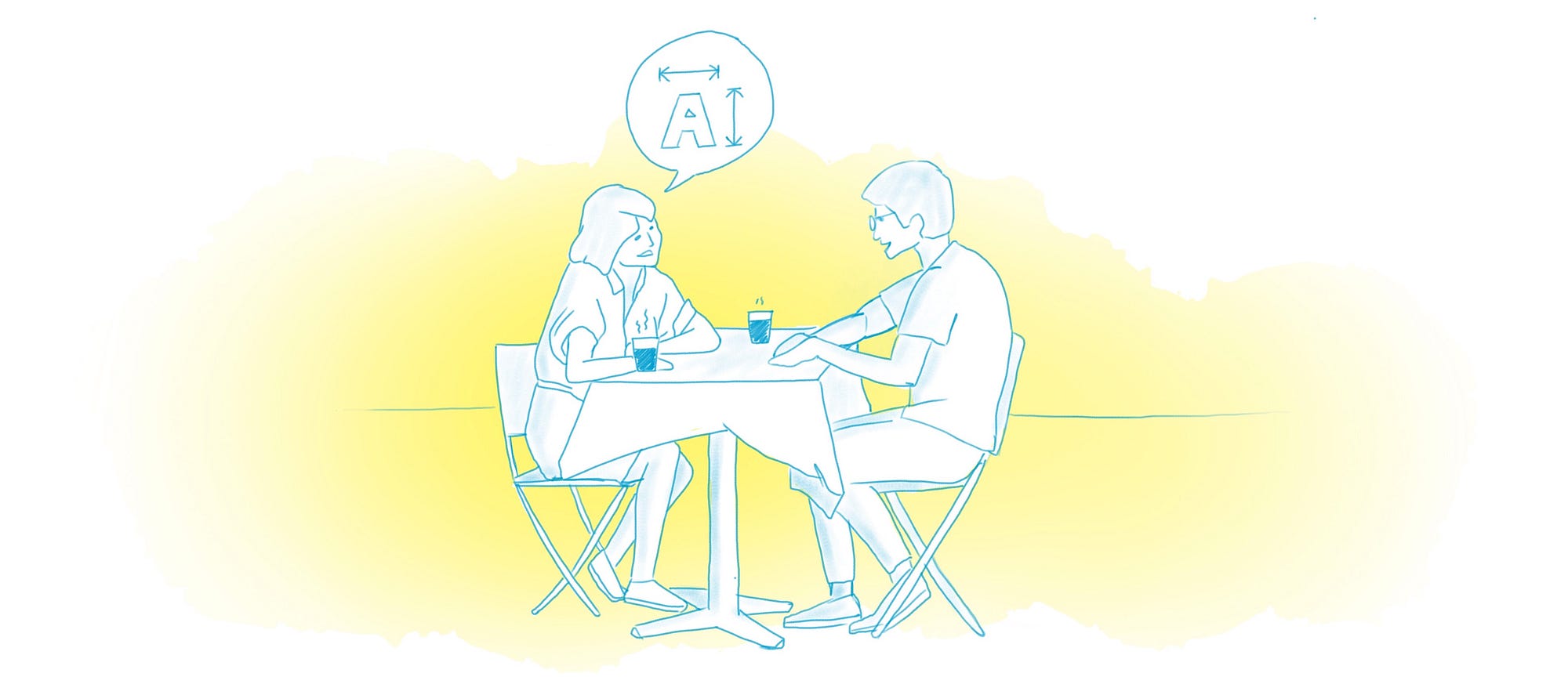Build Design Systems With Penpot Components
Penpot's new component system for building scalable design systems, emphasizing designer-developer collaboration.

medium bookmark / Raindrop.io |

In 2011, for the first time in my career, I had to hire for a design role. I’d never sat in a design interview before. So whilst I was preparing for the interviews I had lined up, I found myself struggling with how to evaluate the candidates.
I delayed the interviews by a few days to give myself time to think about how I would interview & pick the right candidate to hire. I came up with a process that I’ve been using since without much tweaking.
I can now say that the best decision I made was not to think about the hiring conversations as “interviews”. The key is to approach them more like casual chats that hopefully turn into interesting in depth discussions about design.
Whoever I hire will be someone I have to team up with everyday. I need to know how well we connect. I do this best in a casual “chit chat over a coffee” sort of scenario — in a realistic, everyday setting, outside of the formal ‘interview’ space.
Mainly, I’m trying to answer the following questions:
Beyond this, I came up with a few guiding points to make sure we talk about the important stuff. Here they are:
Be clear about your expectations. You should be clear about which gap in your team you’re trying to fill, what type of experience you think would be valuable and what skills you feel might be needed to do the job.
I like to be able to explain the role & expectations in one line — “A junior designer who knows the basics of visual design & is willing to learn under a mentor to deliver user interfaces” or, “A designer with 2 – 3 years of experience in delivering projects with regular user testing exercises”.
This will help you explain the role to the candidate when you meet them.
Also:
Remember that the candidate is also trying to vet you & the company. Start by introducing yourself. Then talk in detail about the company – pitch your company. I like to give a bit of history to explain how we turned from a small app development team to a design fronted client servicing studio.
Take your time, make sure you don’t rush. Set the tone for a relaxed, informal & detailed chat. (Just like a project kickoff meeting – but that’s another story).
Try to stay away from the Q&A format. Start a conversation. I usually lead with:
“Tell me how you got into design – start from when you were a kid.”
Pick on as many details as you want, and don’t be afraid to lead the conversation away from work once in a while — it will help the candidate open up and give you both a deeper insight into whether you are a good match. If you’re curious about that little town they grew up in, ask more about it. Tell them about your background as well—it could help them open up. Again, remember you’re also being evaluated by the candidate — give them all the info they need to feel comfortable & connected with you.
This is also when you can get into as much of the nerdy design details as you like. I like to find out what their strengths are and how they developed these. I’m a “design process” nerd, so I love talking in detail about their design process:
I end each interview with a chat about things which are relevant to the job and may not have been touched on in the initial conversation — for example; any special needs or requirements, design tools that the team is using at the moment, salary expectations, etc.
At time when you’ve had a really good chat, it’s easy to forget to talk about these. So, I keep a list of these handy to make sure I cover the important stuff.
If I have a good feeling about the candidate, the next step is a short design exercise followed by a design review with the entire team. My standard exercise is:
“Redesign the ‘Phone’ app.”
The requirements are:
I always hope I get asked for more constraints.
Always follow up, even if you’re not hiring the candidate. It is common courtesy — that is all. I’ve had a number of candidates come back after the interview, asking for general feedback, advice or just to talk more about design — I love these chats.
If you’re interviewing for your team, you should be the one to send the offer letter. Write the letter yourself, make it personal and show your enthusiasm. There’s no excuse not to write a personal offer letter — trust me, you don’t end up writing a lot of these.
Remember, you’re hiring a team mate — someone you will work with everyday. Make time to have a genuine chat.
PS: We’re looking for a Senior Designer at Buuuk — a design & development studio in Singapore.
AI-driven updates, curated by humans and hand-edited for the Prototypr community